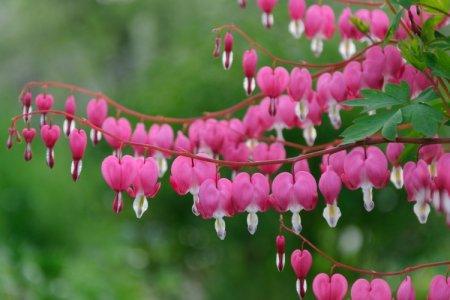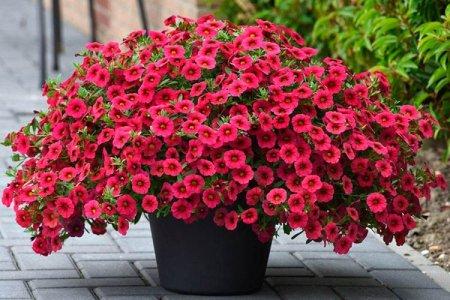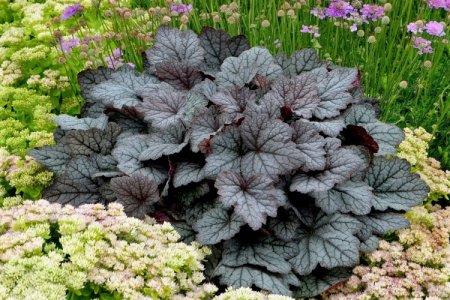
The tiny flowers of gypsophila look like miniature carnations for a reason. They are really close relatives. The flower received its unusual name for the same unusual love for limestone. Finally, gypsophila is just very beautiful!
general information
Gypsophila is also called tumbleweed, and behind such an inconspicuous name hides the amazing elegance of a herbaceous bush. Behind a scattering of white flowers, it seems that there are no leaves at all. Indeed, the shoots of many varieties of gypsophila are practically naked.
Compact garden forms grow up to 50 cm, and more tall semi-shrubs - up to 1.5 m.The leaves are very small and whole. Inflorescences in the form of loose panicles consist of innumerable small white, greenish or less often pink flowers. The diameter of these flowers is 5-6 mm.

Types of gypsophila
Among the hundreds of types of gypsophila, you can find everything - annuals, perennials, grass and shrubs. We have collected those varieties that are worth paying attention to in our latitudes!
Paniculata gypsophila
A tall garden ornamental bush, with proper care, grows by 1.2 m. It very quickly and independently takes the form of a neat ball covered with paniculate inflorescences. There are regular and terry varieties.

Creeping gypsophila
Very small bushes up to 30 cm branch so densely that they can be planted as a ground cover. Against the background of small dark leaves, white or pink buds stand out even brighter.

Gypsophila
A tiny Himalayan species with creeping shoots rarely rises above the ground by at least 10 cm. The first years after planting, the plant may not bloom at all, but then it pleases for a long time with its unusual beauty.

Graceful gypsophila
A bushy annual with branched shoots and small lanceolate leaves grows up to 50 cm. In addition to white varieties, there are also unusual pink or crimson ones. Unfortunately, the graceful gypsophila fades quickly.

Pacific gypsophila
Perennial sprawling shrub before flowering casts a bluish-gray color due to the unusual shade of the leaves. The flowers of this gypsophila are quite large against the background of its congeners - 7-8 mm each.

Wall gypsophila
This species attracts with the fact that it blooms all summer. Wall gypsophila is very popular in Europe because it adapts well to different conditions. The pink flowers are very small, collected in loose panicles.

Gypsophila care
Gypsophila does not tolerate cold weather or excess moisture, but adores the sun. Tall varieties need support, and with regular feeding, it can bloom twice a season. These are the main nuances, and read on for more details!
Temperature
Gypsophila is very thermophilic, so they do not tolerate cold at all. The ideal temperature is around 20 degrees. Even for irrigation, we recommend using only warm water.

Lighting
Gypsophila definitely needs a bright light. It simply will not bloom in the shade or if there is a shortage of daylight hours. Due to the same high light-requiringness, it is advised to grow seedlings under phytolamps, and not by the window.

Watering
Gypsophila should not be filled with water, because it will die. If the summer is rainy, the bushes do not need to be watered at all. In the dry period, it is possible, but not much - no more than a third of a bucket per week per bush. Gently loosen the topsoil after each watering.

The soil
You need a fairly dry soil, not too saturated with organic matter. You can add a little lime, and be sure to avoid areas with high water tables. Weeds must be weeded around the gypsophila.

Fertilizers and feeding
The nutrient soil can be not fertilized in the first year, and in the second year - once a complex mineral fertilizer is applied at the beginning of summer. In autumn, we recommend adding a little phosphorus and potassium.And keep in mind that gypsophila does not tolerate organic matter well.

Wintering
Gypsophila is hard to tolerate frosts, therefore, in order to preserve the bush, it is better to move it indoors for the winter until mid-spring. There are frost-resistant varieties, but we also advise you to take care of shelter for them. First, cut off all the shoots, leaving a couple of the strongest ones, and then cover the planting with leaves, spruce branches or straw.

Planting and breeding
Gypsophila is fairly easy to propagate by seed. Plant them in several pieces at once into peat at a distance of 7-8 cm, lightly sprinkle with soil, sprinkle with water and leave warm under a film and phytolamp. Air every day and occasionally spray the seedlings, and in a week you will see the first shoots.
Thin out the gypsophila as needed, and when a pair of adult leaves appear on each seedling, they can be dived or immediately transplanted into open ground. But not earlier than May-June, when the threat of sudden frosts has finally passed.
Before flowering, gypsophila can be propagated by apical cuttings about 7 cm in length. Remove the lower leaves, leave the cuttings for a day in the rooting machine and seedlings in a mixture of peat and sand about 2 cm deep. Root them under the film, periodically airing and watering. After 2.5 weeks, remove the film, and by the end of summer, the cuttings can be transplanted to a permanent place.

Pest and disease control
The upper shoots first turn gray and deformed, and then the whole plant dies due to bacterial wilting. And from the base, the seedlings turn black and rot because of the black leg. It is better to quickly remove the diseased plant along with the root and treat the entire area with medicinal preparations.
Due to an excess of moisture and violations of the conditions of care, a fungus appears. Most often it is rust with red spots or gray rot with soft watery lesions. In any case, you need to remove all infected parts and spray the plant with fungicides, as well as establish watering.
Gypsophila shoots and leaves love spider mites, worms and miner moths. Fortunately, there is no need to invent anything here, and specialized insecticides are enough. It is more difficult if the planting was struck by a nematode that hides in the roots. Then you will have to remove the entire plant from the root, cultivate the land around and not plant anything there for a while.

Gypsophila - photo
The tiny buds of gypsophila in their crazy numbers look just magical both in the garden and in bouquets. Just look!



























